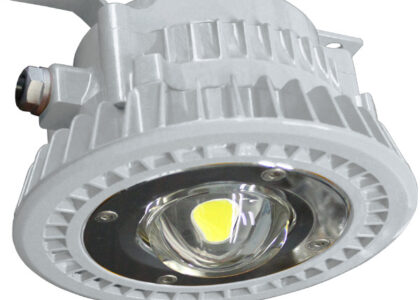The latest edition of the Future Market Insights report reveals that the plug-in hybrid electric vehicle market size is poised to reach a value of US$ 35,927.40 million in 2024. This positive trend is anticipated to persist, with forecasts suggesting a market worth of US$ 1,86,450.62 million by 2034. The plug-in hybrid electric vehicle sector is expected to maintain a robust compound annual growth rate (CAGR) of 17.9% through 2034.
The Plug-in Hybrid Electric Vehicle (PHEV) Market is experiencing significant growth driven by several factors, including increasing environmental concerns, government incentives, and advancements in battery technology. PHEVs are vehicles that combine an internal combustion engine with an electric motor and a battery pack that can be charged by plugging into an external power source, offering drivers the flexibility to drive using electric power or a combination of electric and gasoline power.
Request a Sample of this Report:
https://www.futuremarketinsights.com/reports/sample/rep-gb-1537
One of the primary drivers of this market is the growing emphasis on reducing greenhouse gas emissions and improving air quality. PHEVs offer lower emissions compared to conventional gasoline vehicles, making them an attractive option for environmentally conscious consumers and governments seeking to reduce vehicle emissions and combat climate change.
Moreover, government incentives and regulations aimed at promoting the adoption of electric vehicles (EVs) are driving growth in the PHEV market. Incentives such as tax credits, rebates, and subsidies for purchasing PHEVs encourage consumers to choose these vehicles over traditional gasoline vehicles, stimulating demand and market growth.
Furthermore, advancements in battery technology, such as higher energy density, faster charging times, and improved durability, are driving innovation in the PHEV market. These advancements are leading to increased electric range, improved performance, and lower costs, making PHEVs more competitive with traditional gasoline vehicles and pure electric vehicles (BEVs).
Key Takeaways
- The global plug-in hybrid electric vehicles application is on the rise as it helps in minimizing fuel usage and promotes the vehicle’s cost-efficiency. The automobiles are configured to charge the internal combustion engine with the help of an electric motor and other fuel like diesel or gasoline.
- Since the transportation sector is known for being a primary source of heightened GHGs. i.e., greenhouse gas emissions. Various policymakers are incorporating favorable regulations that will encourage the usage of electric vehicles (EVs), such as plug-in hybrid vehicles (PHEVs) in order to motivate the public to use alternative fuels, such as electricity, etc.
- The market is actively being supported by federal and state policymakers working rigorously towards the rapid expansion of charging station infrastructure. Furthermore, the demand to decrease dependence on fossil fuels is one of the key factors contributing to the adoption of PHEVs across the globe.
- The ongoing research and development activities are helping in bringing down the prices of electric vehicles by adopting new technologies and bringing a new type of plug-in hybrid vehicles every year are predicted to spur market growth in the forecast period of 2022-2032.
Competitive Landscape
Various companies in the market are focusing on extending their portfolio of electrified automobiles to efficiently cater to the changing needs of the customers while simultaneously retaining their competitiveness globally.
Some of the major companies have developed new products which offer the benefits of two cars in one. These products are anticipated to offer the benefits and flexibility of both longer trips and everyday driving. The automotive functions as a hybrid car and can be charged just like other electric vehicles.
At present, the Asian continent is poised to create robust opportunities over the assessment period. In countries like India, the emergence of hybrid vehicles is attracting cost-conscious buyers. These hybrid automobiles meet stricter emission norms, while the current prices of motor fuel are soaring in the country. Hybrid vehicles may be costly in comparison to traditional petrol cars but may offer significant fuel efficiency in comparison to petrol-run cars.
The market players pay keen attention to maintaining superior quality of the products and innovation. Furthermore, they are also trying to diversify their range of manufacturing, indulging in mergers and acquisitions, and adopting organic growth strategies for a strong foothold in the global market.
Some of the key companies in the market are
- Renault SA
- Nissan Motor Corporation Limited
- Volkswagen AG
- Honda Motor Company Limited
- General Motors
- Ford Motor Company
- Daimler AG
- Mitsubishi Heavy Industries Ltd.
- Toyota Motor Corporation
- BMW AG
Direct Purchase of this Report: https://www.futuremarketinsights.com/checkout/1537
Plug-in Hybrid Electric Vehicles Market by Category
By Vehicle Type, Plug-in Hybrid Electric Vehicles Market is segmented as:
- Passenger car
- Light Commercial Vehicle
By Technology, Plug-in Hybrid Electric Vehicles Market is segmented as:
- Series
- Parallel
- Series-parallel
By Region, Plug-in Hybrid Electric Vehicles Market is segmented as:
- North America
- Latin America
- Europe
- South Asia and Pacific
- East Asia
- Middle East & Africa
Author
Nikhil Kaitwade (Associate Vice President at Future Market Insights, Inc.) has over a decade of experience in market research and business consulting. He has successfully delivered 1500+ client assignments, predominantly in Automotive, Chemicals, Industrial Equipment, Oil & Gas, and Service industries.
His core competency circles around developing research methodology, creating a unique analysis framework, statistical data models for pricing analysis, competition mapping, and market feasibility analysis. His expertise also extends wide and beyond analysis, advising clients on identifying growth potential in established and niche market segments, investment/divestment decisions, and market entry decision-making.
Nikhil holds an MBA degree in Marketing and IT and a Graduate in Mechanical Engineering. Nikhil has authored several publications and quoted in journals like EMS Now, EPR Magazine, and EE Times.
About Future Market Insights (FMI)
Future Market Insights, Inc. (ESOMAR certified, recipient of the Stevie Award, and a member of the Greater New York Chamber of Commerce) offers profound insights into the driving factors that are boosting demand in the market. FMI stands as the leading global provider of market intelligence, advisory services, consulting, and events for the Packaging, Food and Beverage, Consumer, Technology, Healthcare, Industrial, and Chemicals markets. With a vast team of over 400 analysts worldwide, FMI provides global, regional, and local expertise on diverse domains and industry trends across more than 110 countries.
Contact Us:
Future Market Insights Inc.
Christiana Corporate, 200 Continental Drive,
Suite 401, Newark, Delaware – 19713, USA
T: +1-845-579-5705
For Sales Enquiries: sales@futuremarketinsights.com
Website: https://www.futuremarketinsights.com
LinkedIn| Twitter| Blogs | YouTube




